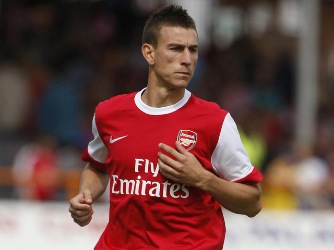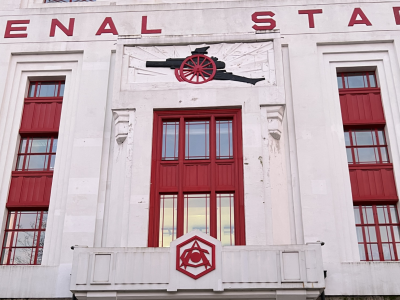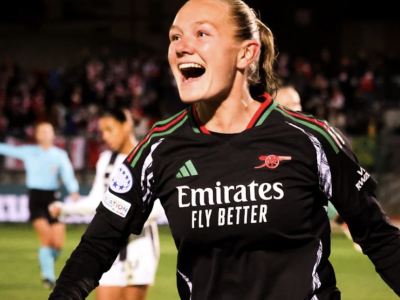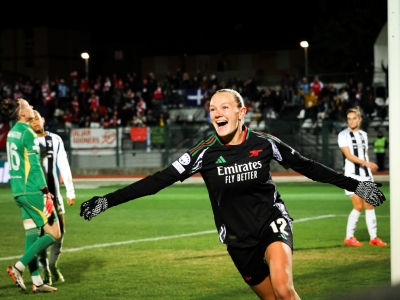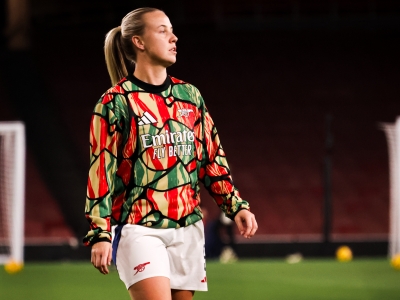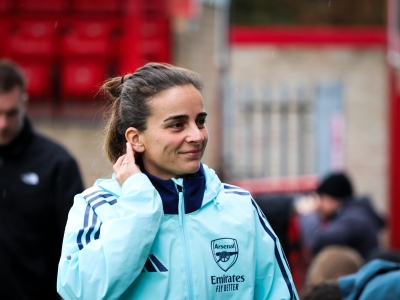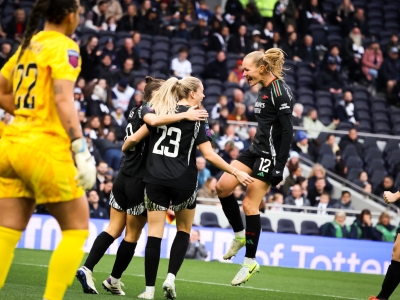As each transfer window comes and then so agonisingly passes, Arsenal fans increasingly look like the hungry hound staring into the butcher shop window. While all the cash rich, paying customers inside get their sirloin steaks, we consider ourselves lucky to get a single solitary sausage tossed in our direction. In this article, I intend to reignite the debate as to how Arsenal can start to speculate to accumulate a little bit more without risking the long term future of our beloved club.
Will this summer bring us any Gooner Galacticos? Probably not, but do we have to get superstars to be just a wee bit more canny in our marketing and transfer dealings?
Real Madrid are world famous for their free spending Galactico policy when it comes to transfers, and while some of you will argue that it hasn't brought them much success on the pitch, it may come as a surprise to learn that it hasn't hurt their bank balance as much as you might think. Signing players like Luis Figo for £37m, Zinedine Zidane for £47m, Kaka for £56m and Cristiano Ronaldo for £80m might seem crazy to us, but maybe, just maybe, there is a bit of method to be learned from their madness.
The first question we should be asking ourselves and each other is: Where on earth do they get all their money? In 2008, Real Madrid generated commercial revenue and sponsorship of £102m, and their overall revenue for the 2007/08 season reached £290m. This meant that in just six years since 2002, Real Madrid doubled their overall annual revenue. That, my fellow Gooners, was by design rather than by accident. In 2009/10, Real Madrid’s annual revenue increased again to a whopping £359.1m.
It is Arsenal that now has the highest match day revenues in the Premiership. Depending on how well we progress in cup competitions, Arsenal can generate around £100m each year from match day revenue alone. In the year ending 31 May 2009, Arsenal made £100.1m in match day revenue by reaching the semi-finals of both the Champions League and the F.A. Cup. In comparison, our overall revenue in 2009/2010 was £224.4m, which indicates that we are severely trailing the elite clubs when it comes to commercial revenue and sponsorship deals.
Thus, it seems logical to analyse the activities of commercially successful clubs in order to learn from their successes and avoid their mistakes. Much to our dismay, Spanish clubs are allowed to sell the rights to their televised games. For example, in 2006, Real Madrid signed a television contract with Mediapro for €1.1 billion over a seven-year period (€150m a year). An image rights deal with Adidas alone in 2007 netted Real Madrid an astonishing €762m. This does not even take into account their sponsorship deals with Coca-Cola, Audi and bwin.com.
The main reason Real Madrid are so successful commercially is that they are always looking to sign the world’s best and most marketable players. David Beckham signed for Real Madrid in 2003 at a cost of £25m, but as soon as he put pen to paper, Real Madrid were cashing in on his marketability. Real cleverly exploited “brand Beckham,” and as a result, captured the hearts and wallets of millions of new fans worldwide.
A 2003 newspaper article excerpt will remind you of the so-called “Beckham effect:”
"Retailers have dramatically increased orders for Real Madrid strips as football fans flock into stores demanding David Beckham's new kit. Kit supplier Adidas said it was swamped with calls in a "frantic” two-hour period after the England captain's transfer to Real from Manchester United was announced. Calls were being made to increase existing orders of the new Real shirt, which go on sale on Friday. Orders for the shirt doubled in less than two hours, while demand is currently running at 350% up on last year, Adidas said. Nick Craggs, head of marketing at Adidas UK, said: "We are currently working very hard to keep up with demand from retailers in the UK. Despite the dramatic increase in numbers, we are confident that we can fulfill all requests as quickly as possible.”
Although that was all said in the immediate aftermath of the transfer, it is estimated by Real Madrid that Beckham's four year stay in Spain increased their sales of shirts and memorabilia by 137 per cent.
Real achieved a similar increase in commercial success when Cristiano Ronaldo signed for them in June 2009. An estimated 1.2m Cristiano Ronaldo shirts were sold in the Spanish capital alone by April 2010, along with millions more sold worldwide. Ronaldo’s Real Madrid career has only just begun, but shirt sales have thus far generated around £100m of revenue (not profit). Who knows how much revenue Real Madrid will generate if Mourinho can bring silverware to the Bernabeu on a regular basis! The shirt sales in emerging markets such as India and China may not yet match those of Korea and Japan, but there is an undeniably fantastic potential for television deals for Europe's top clubs.
A recent interview with Nigel Currie of marketing and sponsorship giants Brand Rapport was most illuminating on the subject. According to Currie, "What they are doing is partly a response to Barcelona's success, but these signings are them putting down a marker to be the top club and football brand in the world." Currie said Real were targeting the world's best players, who happen to also be the world's most marketable players. He added that in emerging markets, fans may swap allegiance from Manchester United to Real Madrid simply because they preferred to support star players rather than clubs. "They are far more fickle in terms of allegiance," he said. "But it is not about Real looking to sell more merchandising in places like China, in fact they would not make a great deal from doing that. There will be massive TV deals coming up for them overseas in the next few years, that is the big carrot. They are looking to make money from these signings by maximising their future overseas TV rights," says Currie. "With the developments this week Real Madrid will already have restored their profile and status to number one in these emerging markets. And the team that has the most marketable players, and the most supporters, will get the best TV deals," Currie explained.
The man is an expert in his field. If he can see a method to Real's madness, then why can't Arsenal F.C.?
If David Villa cost Barcelona £30m, how much did the club recoup in increased competitive success, merchandising and sponsorship? Does a £30m player always end up costing you £30m? Well, obviously if you do it right, then the answer has to be no, he doesn't.
If Arsenal signed David Villa or Wesley Sneijder, would you buy a replica shirt for you or your kids? I know I would buy two of each for myself if it meant we were signing top international talent!
Manchester United didn't just sign Ji Sung Park for his playing abilities. The club recognised his marketing value in the lucrative Asian markets.
Why is it, then, that Arsene Wenger didn't sign Keisuke Honda after the 2010 World Cup? He has undoubted ability, and Wenger was lavishing the Japanese star with praise during the World Cup; however, a transfer never materialised. I can't help but think that Arsene missed a trick with that one as Honda could have paid for himself in merchandising and TV rights alone.
Players like Koscielny, Denilson, Squillaci, Almunia and Diaby do not sell a lot of shirts or possess a lot of marketability worldwide, and unless they start to win trophies, they will never do so. If Arsenal want to move forward, they are at some point going to have to speculate to accumulate. I, for one, think that now is as good a time as any. Maybe we should all write to Ivan Gazidis and outline just how much we would be prepared to spend on merchandise if certain players were signed! Since it involves us spending even more of our hard earned money than we currently do, I think that he just might be interested in hearing from us!

